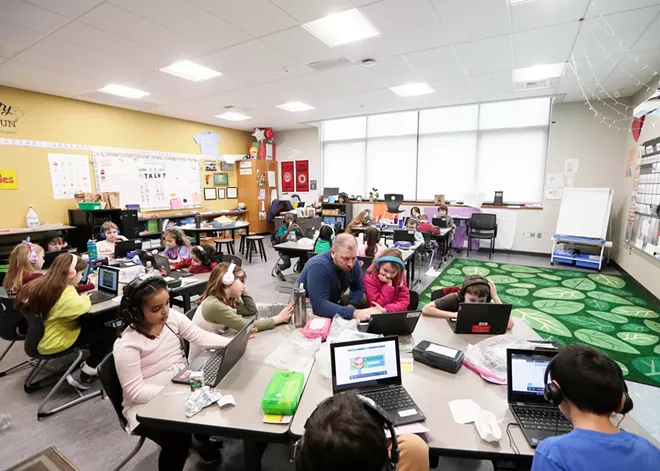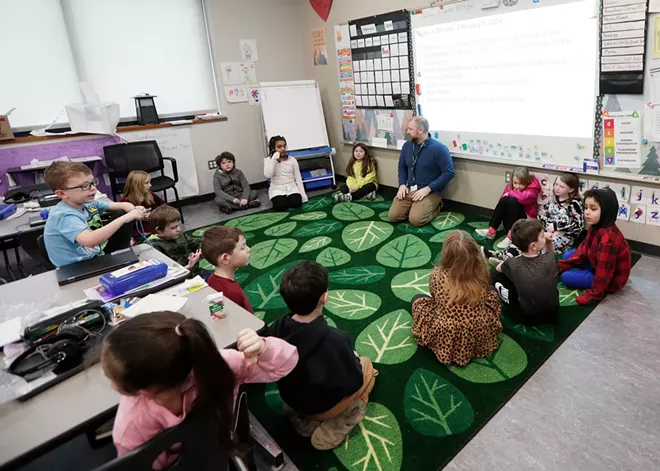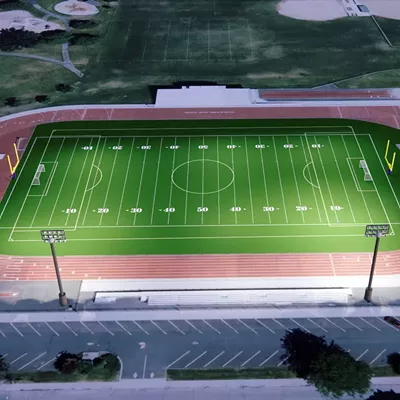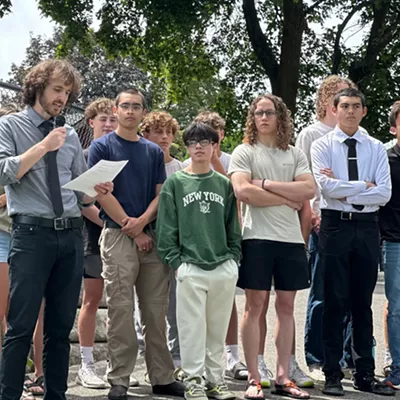
Kids these days just aren't getting perfect attendance like they used to. We can add that to the list of things that COVID got its grubby hands on.
Before the pandemic, student attendance was at an all-time high in Washington. In the 2019-20 school year, fewer than 10% of students were chronically absent, meaning they missed at least 10% of the school year, which translates to about two days a month or 18 days a year.
At Spokane Public Schools, even fewer students missed school pre-pandemic, with just about 5% of them considered chronically absent.
Yet in the last four years, we've seen this record high attendance turn into dismal lows, with regular attendance plummeting by about 21 percentage points.
In Washington, 30.3% of students were chronically absent in the 2022-23 school year. In other words, about 330,000 of the state's nearly 1.1 million students missed too many days. That's a slight improvement over the previous school year, when 32.8% of students were chronically absent, according to the Washington Office of the Superintendent of Public Instruction (OSPI).
There are many reasons why students may be absent, but the most common reasons across all grade levels are physical illness and mental health, according to Krissy Johnson, OSPI assistant director of attendance and engagement.
"Certainly after the pandemic we've seen families deal with an increase in illness," Johnson says. "As a parent myself, I know I'm much more careful now."
OSPI recently interviewed about 1,200 students about why they missed class. In these one-on-one conversations, 56% of the students said that they were absent because they were sick. (COVID accounted for about 31% of those absences.)
"When [students are] not in attendance it can signify that something is going on in their personal lives," Johnson says.
Other than being sick, many students — particularly middle and high school students — said they were absent because they don't feel like they have the support needed to succeed.
Spokane Public Schools and the Central Valley School District are Spokane County's largest districts, and both recorded a similar proportion of absentee students, with 28.7% and 30.7%, respectively, in the 2022-23 school year.
The West Valley School District sits between these two large districts. And even though it's much smaller — with only about 3,500 students compared to SPS' almost 29,500 students and CVSD's 14,700 students — it has one of the worst recorded attendance rates in Eastern Washington.
According to OSPI data, the district recorded nearly 40% of its students being chronically absent in the 2022-23 school year. At West Valley High School the numbers are far worse with only 53.5% of its students regularly attending.
This was also one of the few districts statewide to have its regular attendance continue to decrease, rather than the slight increase that was seen in schools across the state for the 2022-23 school year.
West Valley Superintendent Kyle Rydell, however, says the situation isn't as dire as it appears. Due to staff turnover and reporting errors, he says the numbers reported to the state were incorrect.
In Washington, about 330,000 of the state's nearly 1.1 million students were chronically absent in the 2022-23 school year.
While his administration team is still working to figure out exactly what the district's attendance rate is, Rydell believes that his district's regular attendance rate is in the 70-80% range — a marked improvement from the previous year, but still less than it was before the pandemic.
Even so, Rydell blames the lasting effects of a pandemic for the increased student absences.
"We were asking students and their families to stay home for long periods of time for quarantine," he says. "I think we're seeing the ripple effect of family members following quarantine protocols, and that's what dropped a lot of attendance down."
Many teachers in the district place their assignments and lessons on sites like Google Classroom, so students can complete their assignments even if they're sick and unable to come to school. But, this doesn't make up for actual instruction time.
"It's hard to get students caught back up because missing instruction is hard," Rydell says. "There may be situations where there are unique circumstances, but we're still trying to do everything we can to make sure kids are learning."
Students in the West Valley School District aren't allowed to attend class virtually like they could during the pandemic. So even though their assignments are online, if they don't attend in person, they're still missing class instruction.

So how do schools get more students to regularly attend class?
Educators have been asking this question since long before the pandemic, and they'll probably still be asking it through the next one.
The answer for West Valley High School Principal Ryan Mulvey is pretty simple: reengage students in their education. This means that instead of trying to just get butts in seats, educators need to work to make sure their students feel some sort of agency in their education.
That's why Mulvey started an initiative at West Valley High School called "Eagle Time," a 30-minute period, three days a week. For those who may be struggling to stay caught up in a class, this is a time where they can get extra help.
Students who are caught up on all their work use this as time to connect with their teachers through non-curriculum classes. Mulvey says these are often based on teachers' personal interests. For example, a recent offering saw students learning how to tie a fly for fishing, according to Mulvey.
"There are lots of different skills taught to students," he says. "They're getting the opportunity to make that connection with an adult at school, and it's helping us bring kids back to school."
"More and more students are trying harder to stay current in their classrooms," Mulvey continues.
Since implementing this initiative, Mulvey says more students than ever before are on track to graduate on time and the number of students who were failing one or more of their classes has decreased by half. (We won't know until next year how this program affected attendance.)
Other school districts in the Inland Northwest are working with third-party organizations like Communities In Schools to address issues like chronic absenteeism along with other behavioral and academic problems.
Right now, Communities in Schools works with SPS, CVSD, Cheney Public Schools, East Valley School District and Medical Lake School District.
According to its program manager Alyssa Gonzalez, each school has its own site coordinator in an effort to further individualize the support they provide.
Gonzalez says it's much easier to address absenteeism in elementary schools because it's often not the child's choice to miss school.
"We find that it's not the student's fault that they're not in school," Gonzalez explains. "Truly the biggest barrier is parents not having the ability to get students to school."
So to address this they may implement programs like the Walking School Bus, which has one or more adults walking with a group of students so they can safely get to school in time for that first bell.
While working in middle and high schools, Gonzalez says the work is less about how to get students to school and more about how to get them interested in school. Part of that, she says, is addressed by finding mentors for these students.
"Mentorship is something we hear a lot about," Gonzalez says. "Students knowing that there is a person there that truly cares about them is so important for them to engage more in school."
Even with all the assistance that students are getting, attendance in the state has only increased by a few percentage points, leaving many to wonder if the numbers will ever rebound to their pre-pandemic totals.
Mulvey, however, thinks this framing of "getting back to normal" is actually harmful to the work that's been done in schools.
"The pandemic wasn't all bad," he says. "We've learned a lot of lessons that will help our students succeed." ♦
IDAHO, TOO
Absenteeism isn't unique to Washington schools. Districts nationwide have been experiencing high levels of chronic absenteeism in recent years. In Idaho, 20.6% of students were chronically absent in 2022, which decreased to 17.1% in 2023.
In the Coeur d'Alene School District, 13.5% of students were chronically absent in the 2022 school year, according to the Idaho Department of Education. That increased to 22.2% of students in the 2023 school year — a 60% (or about 800 more students) jump in a single year.
Idaho only started collecting data on absenteeism last year, according to Valerie Steffen, accountability and reporting coordinator at the Idaho Department of Education, so there isn't any way to compare these statistics to any year prior to the pandemic.
— COLTON RASANEN






















